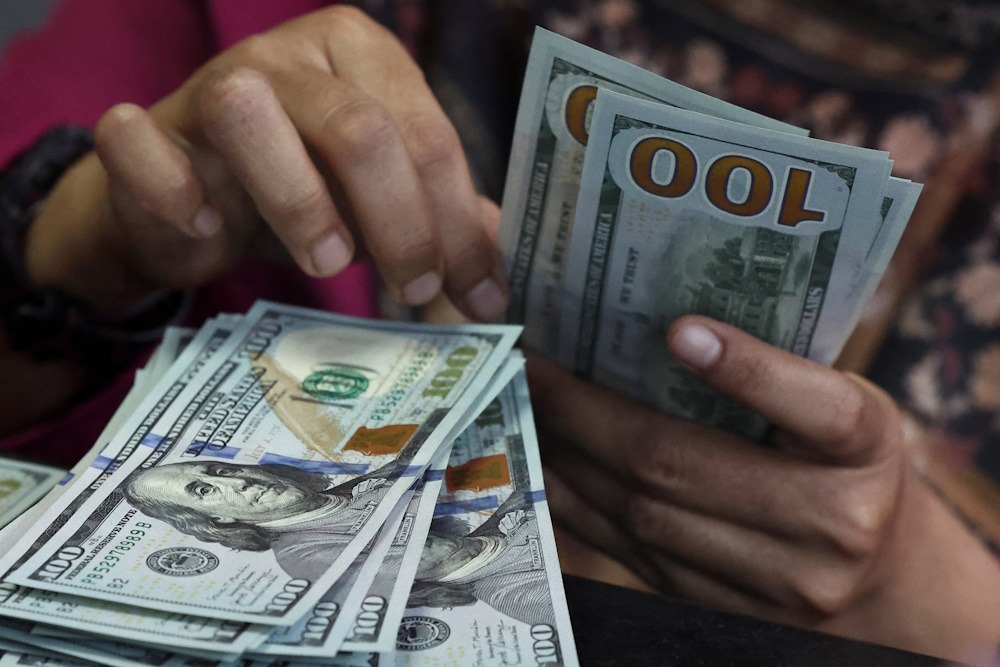The government asserts that the dollar is set to decline. The communication this time was directed towards representatives from both the export sector and the agricultural sector. The economic team emphasized that the decrease in export duties is provisional and provided insights regarding the tax reform initiative. Meanwhile, concerns linger regarding the viability of the peso appreciation strategy: outbound tourism is on the rise, inbound tourism is declining, and there is a surge in visa applications to China. Spending the long weekend in Salta has become costlier than doing so in Lima or Santiago de Chile.
On the previous Friday, three of Minister Luis Caputo’s closest associates made a visit to the Rosario Stock Exchange. They undertook this action to provide a comprehensive overview for representatives of the agricultural sector and the export sector regarding what they characterize as the “third phase” of the economic program. In attendance at the meeting were Juan Pazo, who leads Argentina’s Customs Revenue and Control Agency (ARCA, by its Spanish initials); Federico Furiase, the director of the Central Bank; and Felipe Núñez, an advisor at the Economy Ministry. Sources who participated in the meeting reported that officials suggested it is preferable to sell grain now, as the exchange rate is likely to decrease. “Don’t expect a devaluation because it won’t happen,” they asserted. They also emphasized that the reduction in export duties is temporary. In a separate observation, it was noted by one of the attendees that the Argentine Rural Society had not lodged any complaints concerning this issue.
Business leaders concurred that the government’s foremost objective is to reduce inflation. Milei aims for the dollar to decrease to the lower end of the range. To achieve this, he requires the stability of foreign currency supply in the market; however, the export sector harbors concerns. “There will be a liquidation in the next two weeks,” stated a knowledgeable insider in the export industry. “There are producers who have to sell at AR$300,000 (US$252.10) a tonne even if they lose money because they have to pay debts, but after that, they’re not likely to sell at this price.”
When inquired about the dollar rate at which sales might commence, the source was unequivocal: “at AR$1,400.” Nonetheless, he acknowledged that AR$1,300 could also lead to higher sales volumes. Everything remains to be seen; the harvest is somewhat delayed due to the heavy rains that occurred weeks ago in the core region.
Unprecedented issuance of visas to China. The trio of officials expressed confidence that the currency appreciation model will enhance real income and boost demand, while supply is expected to rise as a result of tax cuts and labor reform. However, different sectors raise concerns regarding the sustainability of the model and its implications for domestic production.
The industry continues to face challenges in achieving a successful launch. March’s picture was poor; consulting firms foresee a continued decline. However, beyond the fundamental circumstances, a structural shift is occurring: firms are moving their production facilities, connections in value chains are being supplanted by imported goods, and entire industries are reassessing their sustainability in the current environment. Meanwhile, a surge of business professionals is journeying to Asia in pursuit of import opportunities. What? Indifferent. The sectors exhibit considerable diversity, and business individuals remain receptive to the unexpected allure of prices stemming from the currency appreciation.
Sources with access to the Chinese embassy in Argentina confirm an exponential increase in visas for travel to that country, and according to INDEC data, purchases of goods from that country grew 86% year-on-year. The high cost of living in Argentina, when measured in dollars, presents remarkable scenarios. Despite mass consumption hitting its lowest levels in recent years and a decline in formal sector jobs, outbound tourism is experiencing remarkable growth, with an increase of 98.8% year-on-year in March. In the same month, foreign arrivals to the country decreased by 24% relative to the previous year.
The matter is straightforward to understand; it pertains to incentives. Travel agency Despegar is actively promoting a range of packages for Argentina’s Labor Day long weekend. All encompass flights and three nights of lodging. In Salta, it’s a three-star hotel; in Santiago, Chile, it’s a four-star hotel that includes breakfast, which is the same category offered in Lima, featuring breakfast, a pool, and a sauna. The cost for the Argentine destination stands at AR$1,186,000 (US$996.63), whereas the Chilean option is priced at AR$731,530, and the Peruvian destination is set at AR$1,053,000 per individual. The government asserts that this gap will not be closed through devaluation, but rather through labor and tax reforms. During the gathering at the Rosario Stock Exchange, the economic team suggested potential reductions in certain taxes: specifically, check taxes and withholdings. Meanwhile, the challenge arises for the dollar and reserves as tourists are now able to request foreign currency on the official market.

